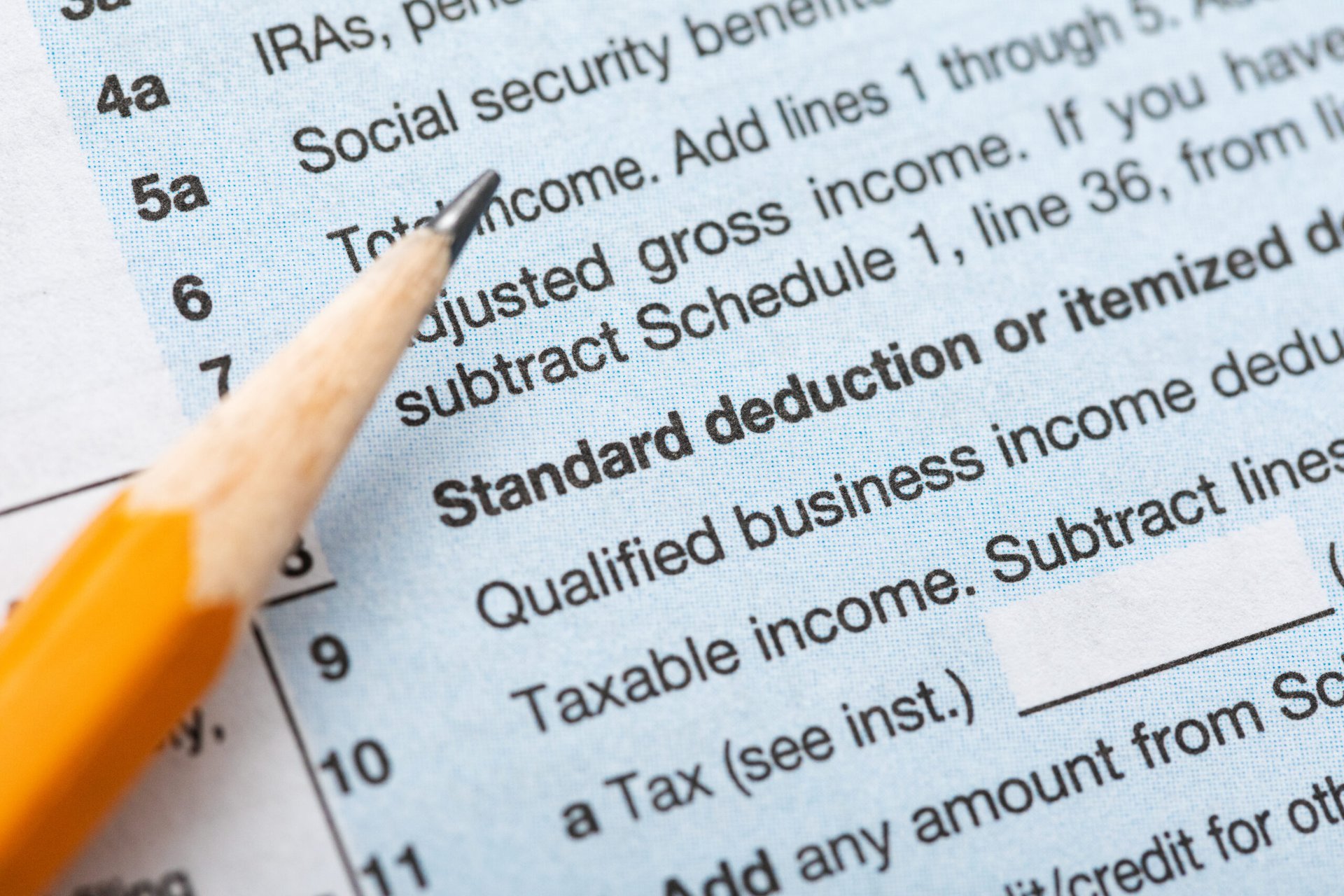Here’s Your New Standard Deduction and Tax Rate for 2023

The federal government regularly adjusts everything from Social Security benefits to retirement account limits to account for inflation.
The same goes for some key aspects of federal income taxes, including the standard deduction and tax brackets, which are the income ranges that determine your tax rate. And 2023 will be no exception: The IRS recently announced that every standard deduction and individual income tax bracket will increase — and by more than usual, due to inflation running near a 40-year high lately.
Following is a look at how the standard deduction and tax brackets will change for the 2023 tax year — the one for which your tax return is due by April 2024.
Standard deductions for 2023
No one is taxed on every dollar they earn. So, not all the income you earn in 2023 will be taxed at the applicable tax rate below.
One reason for this is tax deductions, which reduce your taxable income. Most taxpayers — around 88% — opt to take the standard deduction, which is a flat amount, as opposed to itemizing their tax deductions.
Taxpayers under age 65
The standard deduction gets adjusted regularly for inflation. For 2023, the deduction will be worth:
- $27,700 if your tax-filing status is married filing jointly or surviving spouse (up $1,800 from $25,900 in 2022)
- $20,800 if your tax-filing status is head of household (up $1,400 from $19,400 in 2022)
- $13,850 if your tax-filing status is single or married filing separately (up $900 from $12,950 in 2022)
This means that a married couple filing a joint tax return, for example, would not owe any taxes on the first $27,700 of their 2023 income if they choose to take the standard deduction — assuming both individuals are younger than 65.
Seniors 65 and older and blind taxpayers
Taxpayers who are 65 or older as well as those who are blind generally qualify for an extra boost to their standard deductions. For 2023, such taxpayers generally get an additional $1,500 per married person (up from $1,400 for 2022) or $1,850 per single person (up from $1,750).
So, if two married seniors file a joint return, for example, their standard deduction would be $30,700 ($27,700 + $1,500 + $1,500).
Just note that the IRS has its own definitions of “65” and “blindness.”
For 2023, a taxpayer must be born before Jan. 2, 1959, to be eligible for a higher standard deduction based on age.
To learn more about the higher standard deduction for blindness, see IRS Publication 501.
Tax brackets and rates for 2023
The information in the following charts comes directly from the IRS. The income brackets (dollar amounts) represent taxable income — meaning your income after tax deductions and credits — rather than your total income.
To determine your tax rate for 2023, find your tax-filing status (words in bold) and select the most applicable income bracket listed under your tax-filing status. To the right of that bracket is your tax rate.
Married couples filing joint tax returns
- Up to $22,000 (was $20,550 for 2022) — 10%
- More than $22,000 (was $20,550) — 12%
- More than $89,450 (was $83,550) — 22%
- More than $190,750 (was $178,150) — 24%
- More than $364,200 (was $340,100) — 32%
- More than $462,500 (was $431,900) — 35%
- More than $693,750 (was $647,850) — 37%
Surviving spouses
The brackets and rates for this tax-filing status are the same as those for married filing jointly.
Heads of households
- Up to $15,700 (was $14,650 for 2022) — 10%
- More than $15,700 (was $14,650) — 12%
- More than $59,850 (was $55,900) — 22%
- More than $95,350 (was $89,050) — 24%
- More than $182,100 (was $170,050) — 32%
- More than $231,250 (was $215,950) — 35%
- More than $578,100 (was $539,900) — 37%
Singles
- Up to $11,000 (was $10,275 for 2022) — 10%
- More than $11,000 (was $10,275) — 12%
- More than $44,725 (was $41,775) — 22%
- More than $95,375 (was $89,075) — 24%
- More than $182,100 (was $170,050) — 32%
- More than $231,250 (was $215,950) — 35%
- More than $578,125 (was $539,900) — 37%
Married couples filing separate tax returns
- Up to $11,000 (was $10,275 for 2022) — 10%
- More than $11,000 (was $10,275) — 12%
- More than $44,725 (was $41,775) — 22%
- More than $95,375 (was $89,075) — 24%
- More than $182,100 (was $170,050) — 32%
- More than $231,250 (was $215,950) — 35%
- More than $346,875 (was $323,925) — 37%
Let’s say, for example, that your taxable income is $50,000 in 2023 and your tax-filing status is single. You would fall into the “more than $44,725” tax bracket and your tax rate would thus be 22%.
If your household’s taxable income is $50,000 in 2023 and your filing status is married filing jointly, you would fall into the “more than $22,000” bracket and your rate would be 12%.
Source link





